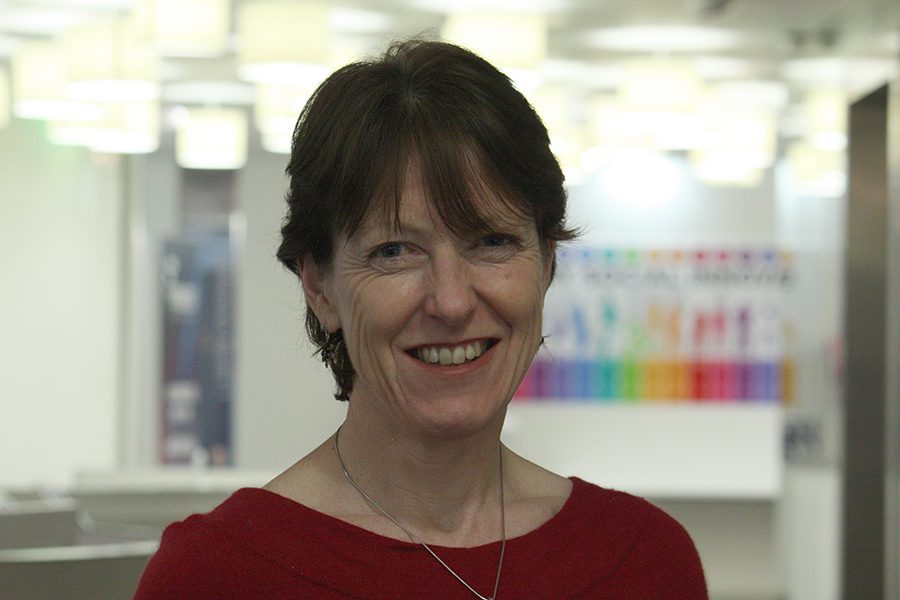The place of place

- By Pippa Coutts, Carnegie UK
- 19 August 2021
- 4 minute read
For over 100 years Carnegie UK has worked on place-making in different guises – as funder, as researcher and evaluator and as an advocate. In our new strategy – Carnegie UK’s 2021 strategy for change: Learning how to live well together – we will explore how we can contribute to collective wellbeing, and tackle wellbeing threats, with and in places across the UK and the Republic of Ireland.
Wellbeing is a multi-layered and multi-dimensional concept, and our strategy highlights the connection and importance of societal, community and individual wellbeing. Our model takes the holistic approach to wellbeing as the starting point for everything we do, giving equal weight to social, economic, environmental, and democratic wellbeing (SEED).
Viewing wellbeing through this lens you can see why places are important to collective wellbeing. Our own personal wellbeing is affected by where you live, for example through the access you have to green space[1], public transport, and opportunities to participate. Equally, aspects of community wellbeing are intertwined – local wealth relies on local health, community spirit and community spaces are linked[2].
Our new strategy commits us to going where there are recognised risks to wellbeing and where we can collaborate with partners to make change happen. In the strategic review, we anticipated that regional inequalities will be exacerbated by the COVID-19 crisis, with the impact of COVID-19 being most severe for those places already experiencing disadvantage. The underlying inequalities between places was a cause for concern prior to 2020, and an issue we had grappled with through our Towns work, so we feel well placed to explore our potential contribution to tackling this inequality going forward.
The other key aim of the strategy is to put wellbeing at the heart of decision making. This implies we will work to influence government and policy makers at every level. A key aspect of policy making we seek to influence is people and communities – including communities of place – have increasingly more say in decisions that affect them. This is reflected in the wellbeing tests we have developed to shape our programmes going forward, which include:
- Give people voice and choice
- Recognise the power of human relationships
- Promote subsidiarity and decisions taken at local level
- Promote dialogue between different communities and sectors
Although, previous strategic plans at Carnegie UK have set a priority for a particular geography –for example rural or more recently towns – we want to be more flexible this time as we move from being ‘theme-led’ to mission-led. We hope our wellbeing tests will help us do that. An emphasis on subsidiarity implies that in places we will be focused on a human scale, whether that is called a town, a neighbourhood or hyper-local.
Our evaluations show that our 2016-2020 projects were well received but we weren’t always able to maximise the connections between them. Much like community wellbeing itself, we knew we were seeing elements of wellbeing but we were not necessarily seeing the sum of those parts. Our SEED framework of social, economic, environmental, and democratic wellbeing will support our work on place to be more integrated. Our strong history in place–based work, exploring tangible (libraries and village halls etc.) and less tangible assets (such as kindness and social capital) can provide us with a basis from which to support the developing understanding of community wellbeing.
As we become mission-led, we no longer come with a programme we prepared earlier, but rather with an offer to walk alongside potential partners and communities in their journey to collective wellbeing. Over the coming months we will be developing our initial exploratory programme around wellbeing in place by listening to others working in this field to best maximise the impact we can have. If you would like to talk to us about this, we’d be delighted to hear from you.
[1] Mental Health Foundation Scotland (May 2021) Engaging with nature available at https://www.mentalhealth.org.uk/news/nearly-two-thirds-adults-scotland-say-being-close-nature-improves-my-mood
Gascon M, Mas MT, Martínez D, Dadvand P, Forns J, Plasència A, et al. Mental health benefits of long-term exposure to residential green and blue spaces: A systematic review. Int J Environ Res Public Health. 2015 Apr 1;12(4):4354–79.
Houlden V, Weich S, de Albuquerque JP, Jarvis S, Rees K. The relationship between greenspace and the mental wellbeing of adults: A systematic review. PLoS One. 2018 Sep 1;13(9).
[2] What Works Wellbeing (April 2021). Places, spaces, people and wellbeing / Community hubs and green space. Available below.
https://whatworkswellbeing.org/resources/places-spaces-people-and-wellbeing/
Help us make the case for wellbeing policy
Keep in touch with Carnegie UK’s research and activities. Learn more about ways to get involved with our work.
"*" indicates required fields
